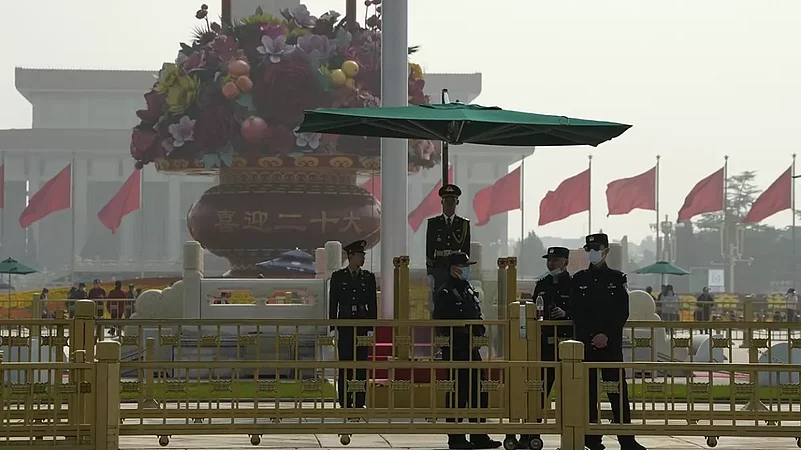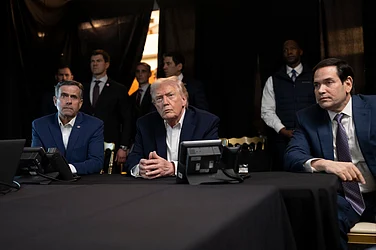On the anniversary of the 1989 pro-democracy protests, China has further tightened its already stringent access to Tiananmen Square in central Beijing. This move comes as the Chinese government continues to suppress discussions and memorial events related to the events of June 3-4, 1989. Hong Kong, which had been the last Chinese-controlled territory to hold commemorations, witnessed the detention of at least two protesters by police in Victoria Park on the eve of the anniversary.
Victoria Park, previously a venue for an annual candlelight gathering, has now become off-limits due to the sweeping national security law imposed on Hong Kong in June 2020. This law effectively prevents any memorial events from taking place, adding to the erasure of the memory of the hundreds or possibly thousands of individuals who lost their lives during the crackdown.
The exact death toll from the 1989 violence remains unknown, as the Chinese Communist Party continues to harass individuals who seek to keep the memory of the events alive, both within China and overseas. As a result, additional security measures were observed around Tiananmen Square, an area already known for its strict security checks and identification requirements. Pedestrians and cyclists passing through Changan Avenue north of the square were also subjected to identification checks.
Even with these heightened security measures, large numbers of tourists were still seen visiting the iconic site, with hundreds patiently queuing to enter the square. Nevertheless, a group of mothers who had lost their children during the Tiananmen crackdown took the opportunity to seek redress and issued a statement reiterating their demand for truth, compensation, and accountability.
Human Rights Watch has urged the Chinese government to acknowledge its responsibility for the killing of pro-democracy protesters in the Tiananmen Massacre. Yaqiu Wang, senior China researcher at Human Rights Watch, emphasized the need for accountability and criticized the Chinese government's ongoing evasion of responsibility, which has had wider implications for human rights domestically and internationally.
Exploring the Significance of the Tiananmen Square Protests: A Defining Chapter in World History
The Tiananmen Square protests of 1989 emerged against the backdrop of China's evolving socio-political landscape and the tragic demise of Hu Yaobang, a key figure in the Communist Party who advocated for political liberalization. Following his funeral in April, tens of thousands of mourners flooded Tiananmen Square, demanding freedom of speech and an end to censorship.
As the movement gained momentum, millions of protestors converged on the square, calling for democratic reforms and an overhaul of press censorship and assembly restrictions. These demands resonated with a nation grappling with economic changes and aspirations for greater political openness. The ruling Communist Party's efforts to stimulate the economy through market reforms had inadvertently bred corruption and heightened expectations for political transformation.
However, within the Communist Party, differing factions emerged, leading to internal debates on how to respond to the protests. While some officials advocated for concessions and dialogue, hardliners prevailed, ultimately leading to the declaration of martial law in Beijing. The situation escalated when, on June 3-4, an estimated 200,000 soldiers, armed with tanks and armored personnel carriers, forcefully entered Beijing, initiating a violent crackdown on both protesters and innocent bystanders.
Eyewitness accounts from that fateful night depict scenes of horror and tragedy. Chinese soldiers opened fire on individuals attempting to enter Tiananmen Square, causing multiple casualties. Journalist Jan Wong, observing from her hotel room, witnessed soldiers shooting people in the back, even as they crawled and pleaded for mercy.
Amidst the chaos, one individual rose above the turmoil, capturing the world's attention. The Tank Man, an unidentified figure armed only with two shopping bags, boldly stood in front of a convoy of tanks leaving Tiananmen Square on June 5. He repeatedly blocked their path until the tanks turned off their engines. Climbing onto one of the tanks, he engaged in a conversation with the driver before disappearing into the crowd. The Tank Man's courageous act symbolized resistance and became an enduring emblem of defiance against oppressive regimes worldwide.
Determining the exact death toll from the Tiananmen Square Massacre remains challenging due to conflicting reports. While the Chinese government claimed 200 civilian deaths, student leaders estimated the number to be around 3,400. A declassified British embassy cable suggested a staggering figure of 10,000 deaths, describing armored vehicles running over students and incinerating their remains.
The significance of the Tiananmen Square Massacre lies in the choices made by the Chinese state at that critical juncture. It represented a pivotal moment where China could have embraced democratic reforms, fostering hope for a more open society. Instead, the government chose a path of authoritarianism, erasing the events from public discourse and cementing the memory as a taboo subject. The Tank Man's iconic image, though suppressed within China, continues to inspire as a symbol of individual resistance against state power.
(With AP Inputs)


























